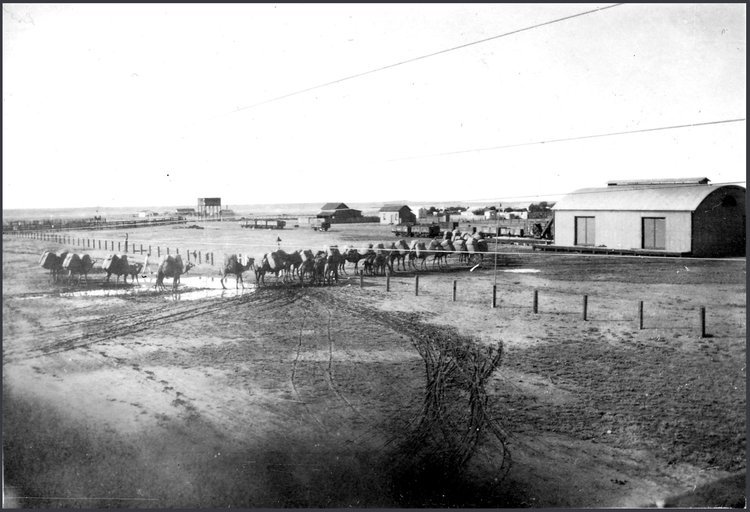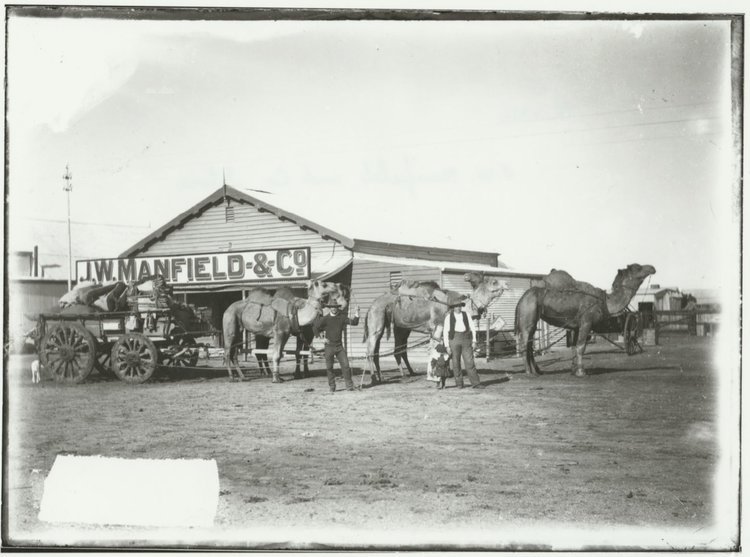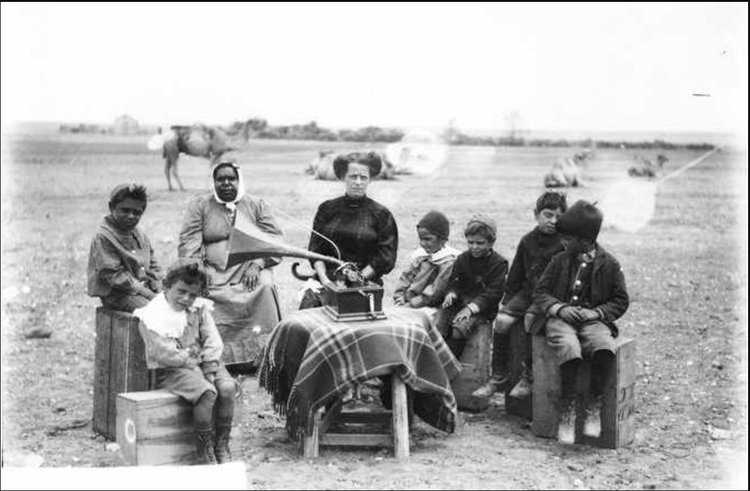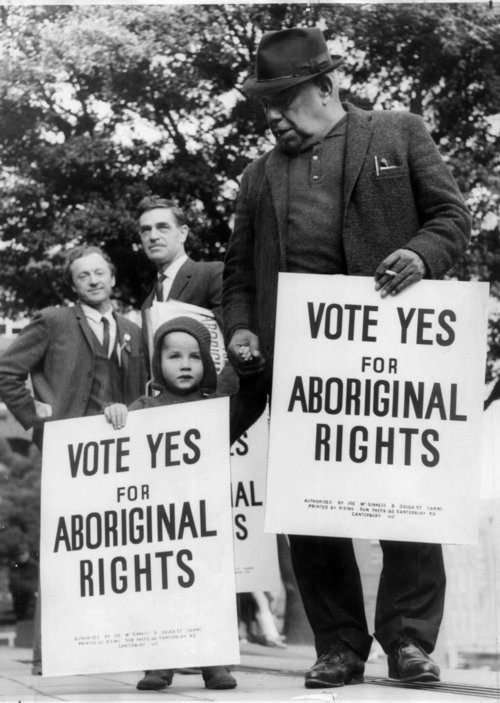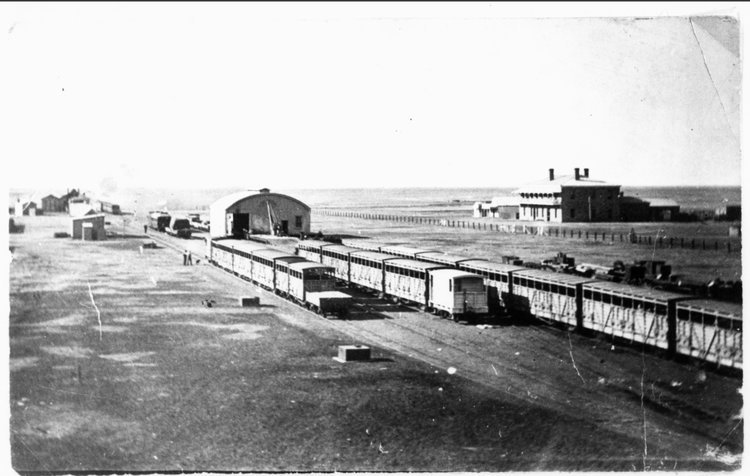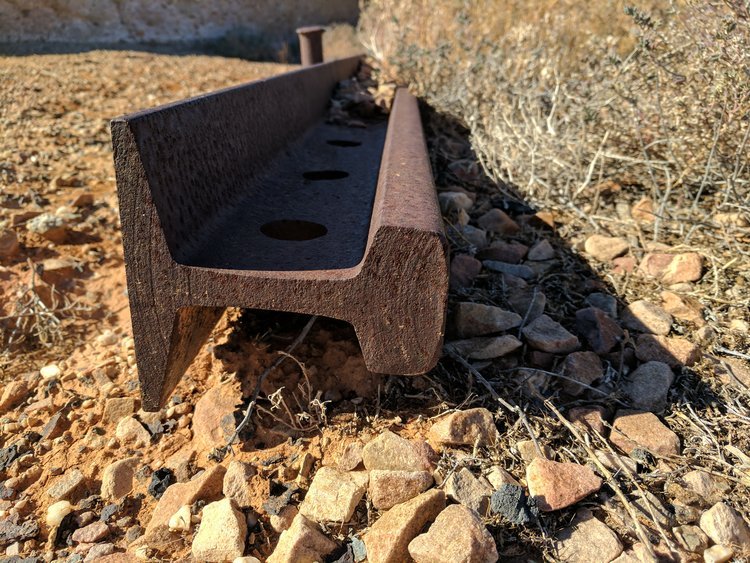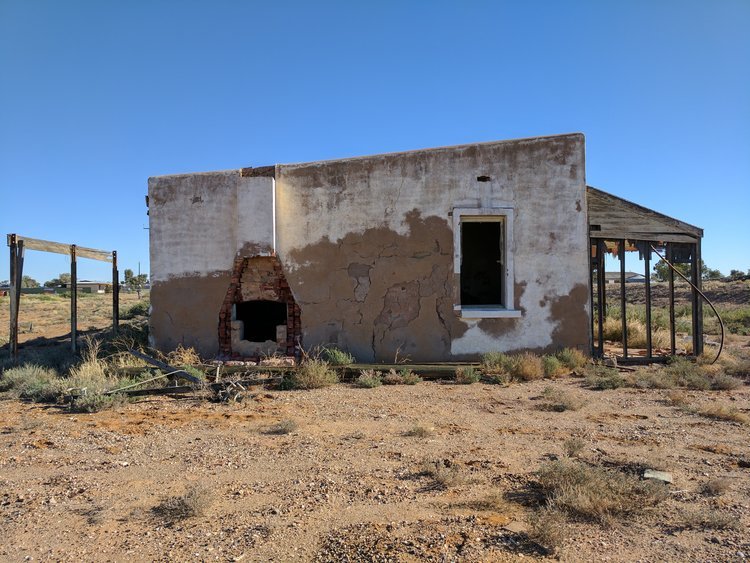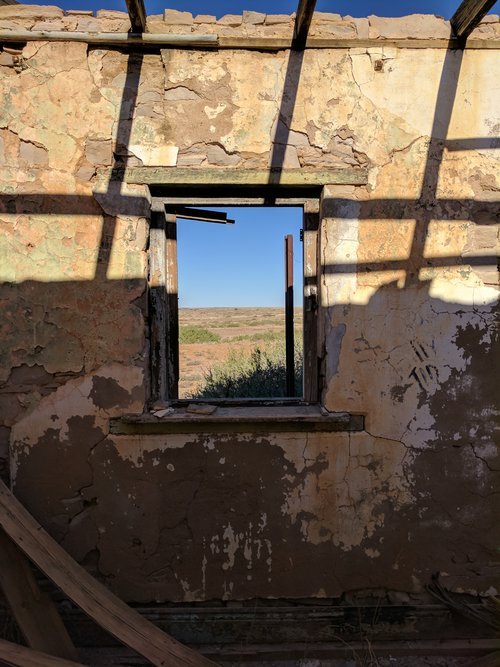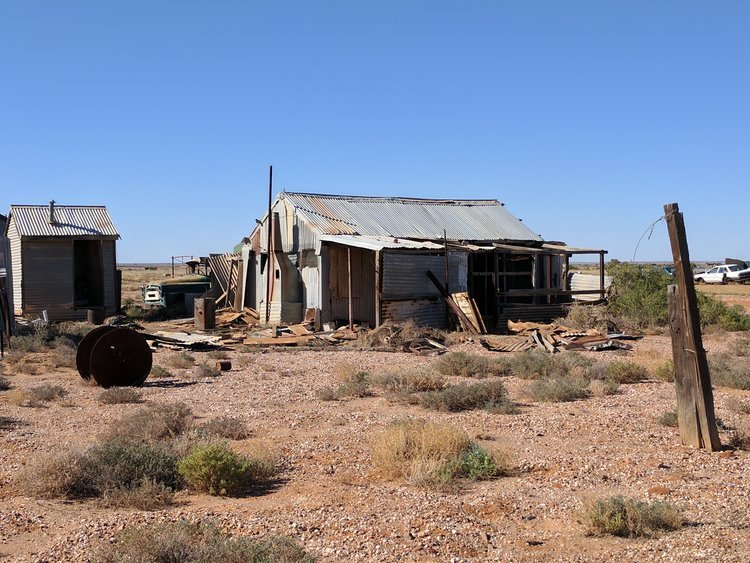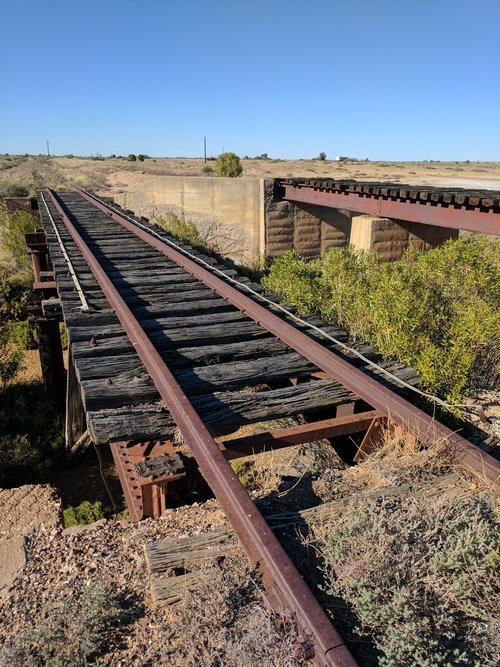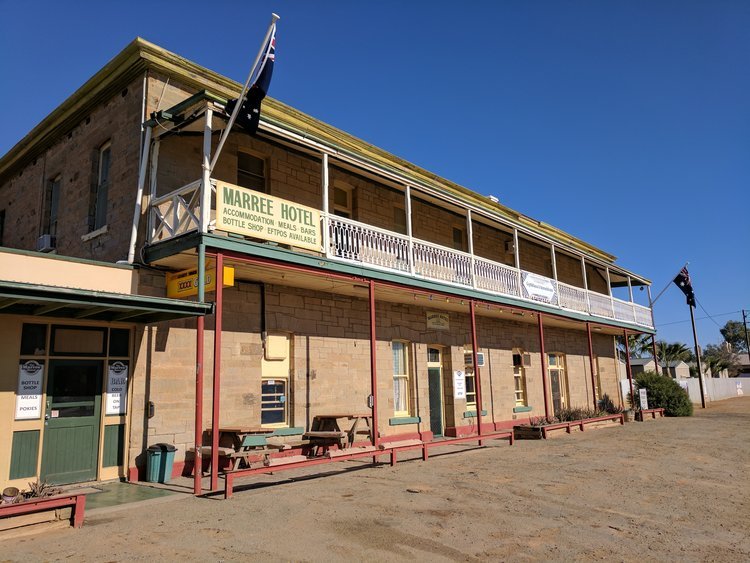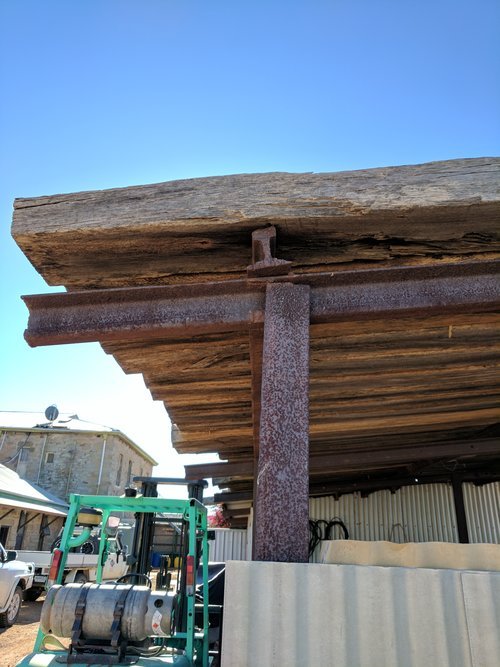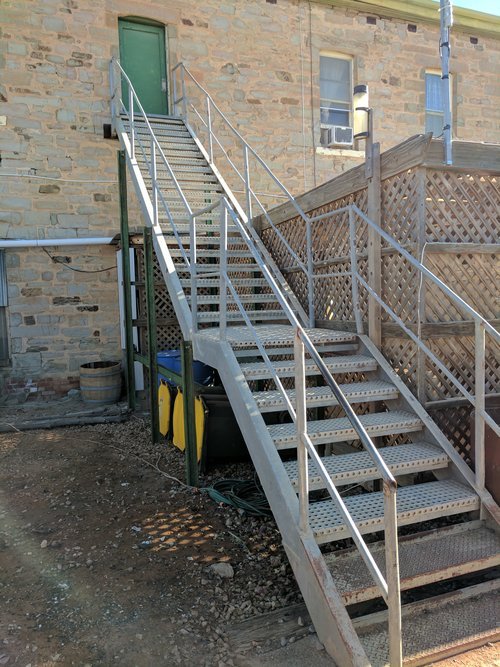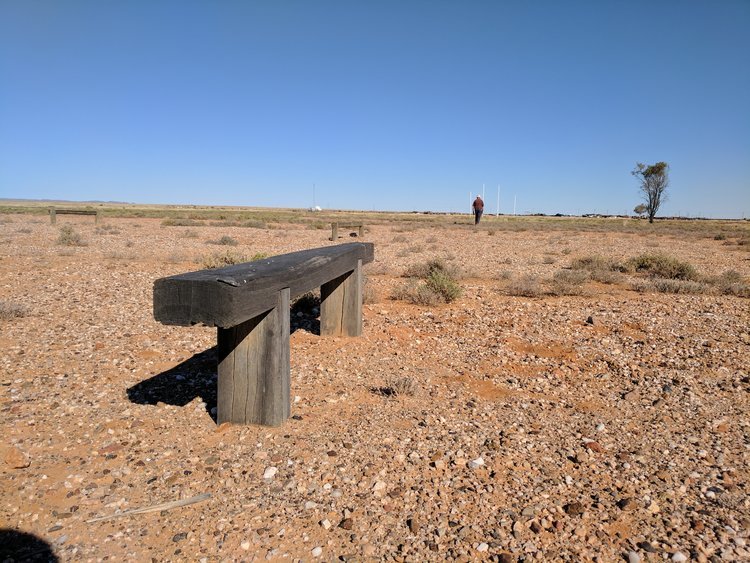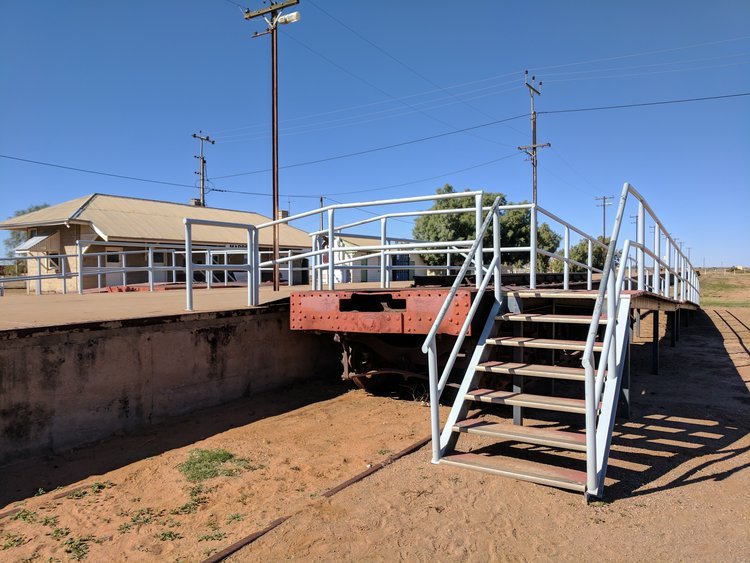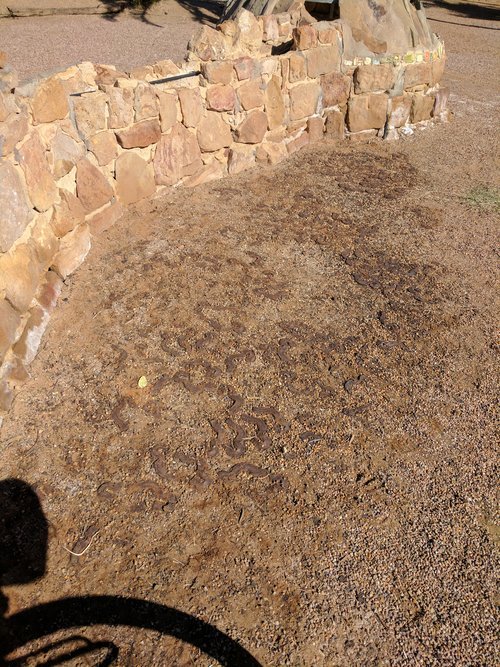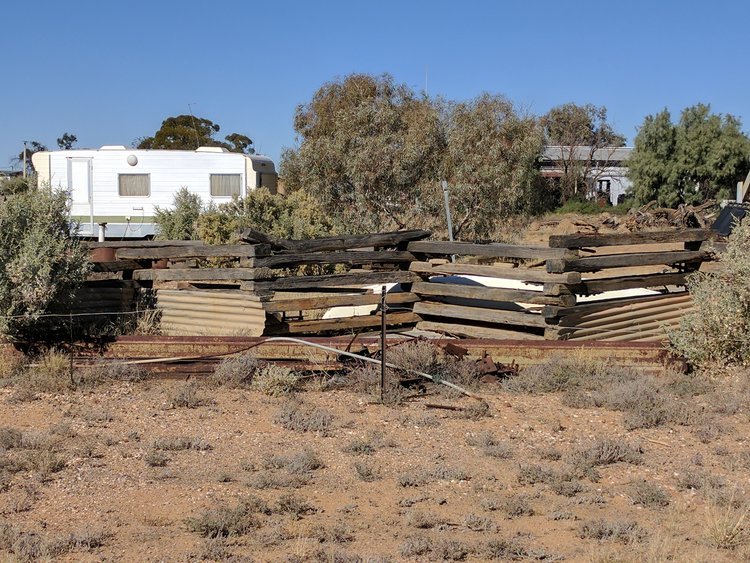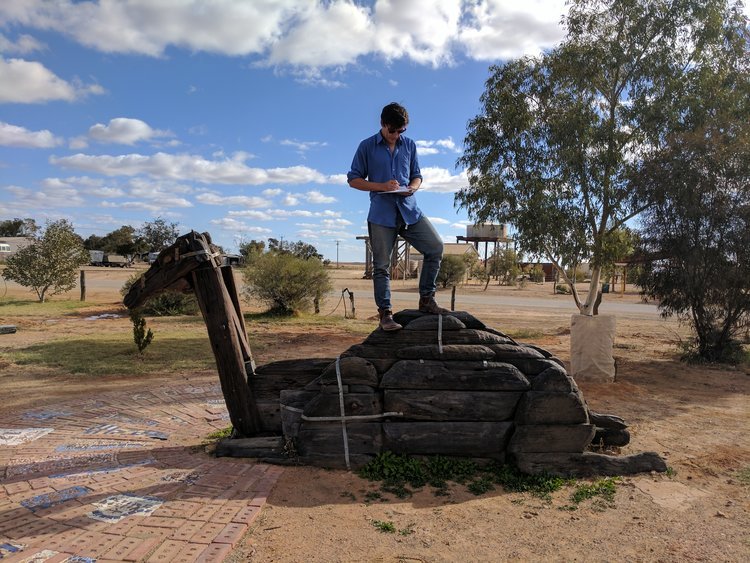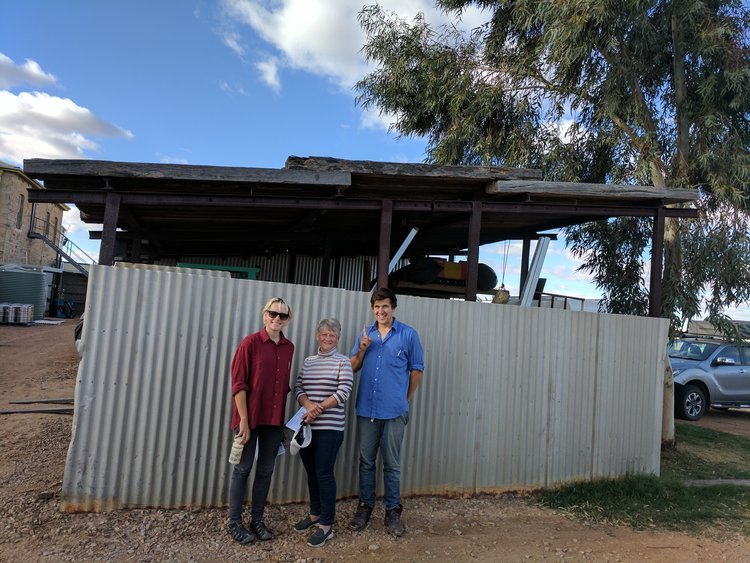The Grand Section Guardian #010 - Stop 008 Marree/july 7, 2017
Wham! Bam! Slick tourist operations churn caravans into cash, shop attendants near the end of their three month stint talk easily with locals and tourists alike. Just out of town lies some of Australia’s most fascinating architectural heritage and one of Australia’s great multicultural stories.
PLACE
Friday 2nd - 9th June
Crucially located at the pivot point between the Oodnadatta and Birdsville tracks Marree’s recent history is determined by ground water, is rail dominated and was the break-of-gauge station (junction of the narrow and standard gauge railway) for The Ghan for almost 100 years. Originally named Hergott Springs until 1883 (as it was far too German, Ja!), the rail line arrived, the town was renamed Marree, jobs opened, tourists flocked and sedentary inhabitation started. For many years Marree was South Australia’s most northerly railhead as well as the camel capital until the 1920’s when motor trucks took over inland transportation.
Photos of Camel Trains in early Marree from 1909-20
However long before this, Marree was a pivotal point for Indigenous Australians, the permanent springs being crucial to the north-south trade route through the channel country and places we previously wrote about. This trade route saw the movement of axes, ochre, boomerangs, narcotics and even architects!! Well the architect bit is fairly anecdotal and they were more like specialist builders who could make ‘deadly’ guyahs!
It is these natural springs, where water from the artesian basin comes up through geological fissures that established and continues to sustain this bit of country and its inhabitants. Located in the Lake Eyre Basin, Marree sits on the southern rim of the artesian basin (where water temperature is typically hotter), underground bores supply the town with its water requirements, even being untreated; rates are comparable to the treated city water of Adelaide. With water this expensive it becomes clear in this landscape that water is crucial to survival. Rainfall can be as low as 120mm annually, with evaporation rates 2900% of that.
Graph showing the annual River Discharge of each continent. Australia really lagging behind in the whole water dept. Graph stolen from Mike Smith's wonderful book "The Archaeology of Australia's Deserts". Thanks also goes to SM for showing us this wonderful text.
Marree lies in The Eastern Desert/Arid Rivers Region. Having a distinct character this region has been referred to as ‘The Desert Triangle’ or ‘The dead heart of Australia’ (JW Gregory, 1906) due to its increasing aridity and desolation. Marree itself is bookended geographically by The North Flinders Ranges to the south and Lake Eyre to the north-west, a pivotal geological point between arid mountains and salt lakes. Marree’s location has allowed it to continue in recent times to remain the launch pad of transport for tourism north and west bound from Adelaide.
People
Marree is part of the traditional land of the Arabunna people whose presence in Marree is still keenly felt and their language still alive! This strength of culture is partly a result of the Finniss Springs Mission that operated near Marree and made an active effort to ensure children remained on their traditional lands. The initiative to have an Arabunna centre allows scum like us two to look at and interact with Indigenous artefacts and, most importantly, a traditional owner there to help with understanding and to put up with our barrage of questions!
Marree’s multicultural history is fantastically rich and layered. The wonderful Indigenous past is overlaid with the more recent occupation by Europeans and “Afghans” (a term used to describe anyone who looked even vaguely Afghani). It is on the back of these Afghans and their teams of camels that the legend of the Birdsville and Oodnadatta track were made and the towns survived. Up until the 1920’s camel teams were relied upon to carry goods from Marree to Birdsville and all of the stations and homesteads in between before being overtaken by motorized transport. The trip could take up to six weeks, loading and unloading each camel, morning and night. There were stories of only 3 hours sleep per night! To quote an old cameleer on modern times, “it’s good these days”.
The Rail line arrived in Marree in 1883 which literally and culturally developed division in the town. Europeans to the south of the train line, Aboriginals and Afghans, (the minorities) to the north. However this concrete segregation was not fatal and there are stories of the rail line bringing equality socially and to rates of pay along with feelings of self-worth well before the 1967 referendum. The referendum was the ‘yes’ or ‘no’ vote to:
"Do you approve the proposed law for the alteration of the Constitution entitled— 'An Act to alter the Constitution so as to omit certain words relating to the People of the Aboriginal Race in any State and so that Aboriginals are to be counted in reckoning the Population'?" - excerpt from the 67 Referendum.
The present state of the town is similar to many along The Gahn in which we’ve experienced. As The Gahn faded, so did the majority of the population and now seemingly are floating upon a sea of seasonal workers and tourism creating a transitory interface. From our experience the interface is an exchange between tourists, the long affiliated local rises only after digging deeper. Although this brings a great dynamic and level of enthusiasm to business which may not otherwise be present, there commonly feels to be a struggle with and even loss of identity at times.
Robert & Lizzie Khan are living descendants of both the Afghan and Arabunna heritage respectively. Robert’s ancestors were some of the first cameleers of the town, his father beginning at age eight. Robert himself worked on the rail and holds a huge amount of invaluable anecdotal data of the town, Afghans and the significance of the rail line. His home is homage to the history of the place with traces of rail everywhere. Part of his guest accommodation includes an old carpenter’s car with the original alternator, battery bank and ineffective fans included! These two illustrate as we’ve previously seen the many hats people wear in these small towns to ensure its operation and longevity.
Sharon of Dulkaninna sees through different eyes than her husband, something like the 5th generation of his families’ pastoral lease. Having an ecology background and being from Adelaide she had initially came to the area to study the ecology, in particular rare marsupials limited only to the Maree area. She explained incredible plant adaptations (esp. Salt Bush as explained in previous blog), variations and the change in the country over time. Most interestingly though she responded with “the most interesting thing is the people, still”. After the many decades she still grapples with the locals and her husbands intimate almost innate understanding of the land and weather, knowing exactly the situation of water fallen, coming and running and when it’s time to move, sell and buy cattle. She still can’t see it. Her husband emphasized that you must look after the land and treat it well, if you don’t it will suffer taking a long time to regenerate with good pick. In turn the cattle suffer and so do you.
The understanding and caring for land sympathizes with aspects of traditional Indigenous land management and understanding.
Stuff (Architecture)
The most amazing building in the town is now a pile of dirt and stones, the remnants of Australia’s first mosque. Built in 1884 the first mosque was a ‘bush mosque’ of external rammed earth dwarf walls (approx.. 1500mm high) timber branches and log structure with a gable bough shade roof, rotated toward Mecca (a bit different to Murcutt’s mosque in Melbourne). An ablution pool (for washing the face, feet and hands before prayer) edged with timber graced its entrance and was built by the Afghan cameleers who quickly earned the respect of their Christian and Indigenous peers through the six week return slog to Birdsville. The power that this site holds is of immense value, not just as a historical tid-bit but as a symbol of multiculturalism, acceptance and cohesiveness in Australian history.
Australia's first Mosque at Marree built, 1884, and Australia's newest Mosque in Melbourne still under construction, 133 years apart!! Click on the Image for an interesting discussion on the history of Islam and Mosque architecture in Australia. Particularly relevant in this 'anti-islam' phase the world seems to be caught up in.
The Rail is the other massively influencing factor that has shaped the town, not only did it swell the town to a population of almost 500 in 1883 (now 90 or 60 depending on who you ask) it now literally props up the town. The spirit of The Ghan never really seemed to die. The re-use of rail infrastructure throughout the town is prolific! Fences made from rail-road irons, sheds made entirely out of ‘borrowed’ sleepers and dog spikes, electricity poles tensioned with rail way pegs, rail iron verandah columns and chimney braces dot the town. Carriages are even being utilized as what we see as forms of affordable housing and holiday quarters.
Birdsville being the beginning of stone for our trip, has continued into the South Australian architecture. En-route to Marree, we frequented many stone homesteads in ruinous states and buildings still in use today such as the Marree pub. One notable (dilapidated) stone building in Marree was the transitional house (the same as fettler’s cottages at later stages along the Oodnadatta track).
Symbolic of the before mentioned Ghan bringing equality for the Indigenous people of the area. It was this cottage where indigenous workers and their families who initially lived in tin humpies on the outskirts of town were moved to after a trial period of three months. After proving themselves to be reliable workers they were then moved to a workers cottage and finally a house. This process was seen as a positive step towards equality.
The south and north sides of the line today are still representative of the types of dwellings which once existed. The north side is dotted with hap-hazard corrugated iron shacks, sheds, removable buildings with a lean-to (an outbuilding with a slanted roof that rests against the wall of a larger building) tacked on, chimneys and verandahs. Date palms plantings still visible today are symbolic of their former Afghan inhabitors. The south side of town shows more substantial dwellings with the old post office and stone pub showing the European influence.
As a response to studying the "Rail-Estate" of Marree, we came up with some suggestions:
Almost anything can be held up with rail irons! Learn to weld.
Materials from place give identify to buildings and towns, creating a cohesive (although sometimes ad-hoc) aesthetic.
Water is crucial to in-habitation, the first move. Crucially important since Australia is the driest inhabited continent.
Using whatever is around also allows you to cut costs and give your buildings better green credentials. We all love credentials.
Exhibition, Friday 9th june
For us the prolific re-use of rail infrastructure is unique, fascinating, innovative and in some degrees the epitome of sustainability. Using what local recycled resources are at hand to fulfill and improve function or amenity is fantastic. We walked (slower than cycling so one can see MORE!) the town and mapped out all the re-used infrastructure we could see from garden beds to fences, roofs, walls and structures. We raided local information at hand in books, boards and people’s minds and took this information to Robert to find out more. We collected the historical and anecdotal data on much of the re-use to accompany our map.
And so, Marree’s “Rail Estate” walking tour is what was created. In pamphlet form, the walking tour was one to accompany the many other tourist geared pamphlets in the Information centre. A handy walking map steeped with information about the history of the town and The Ghan. Giving the average tourist something more to appreciate about Marree which to so many is otherwise invisible. A small snippet into the rich, layered history of Marree.
In Between, Marree - The Oodnadatta Track
The famous Oodnadatta track follows mound springs, Lake Eyre, sand dunes and arid flat plains and pans from Marree to Oodnadatta. The Great Artesian Basin reveals itself on the surface along this route, more than anywhere yet we’ve witnessed. The mound springs are escape points of this, some still flowing. The Great Artesian Basin has been thoroughly tapped into by uncapped bored, pastoralists and towns and mining operations which anecdotally are reducing the flow rate of bores and mound springs. Vast and decisive changes in landscape are a constant surprise.
A 1070km travel log as Stop 09 will reveal more, stay tuned.....
Edited by the fantastic Jen Richards
Cheers,
Dusty & Thirsty

